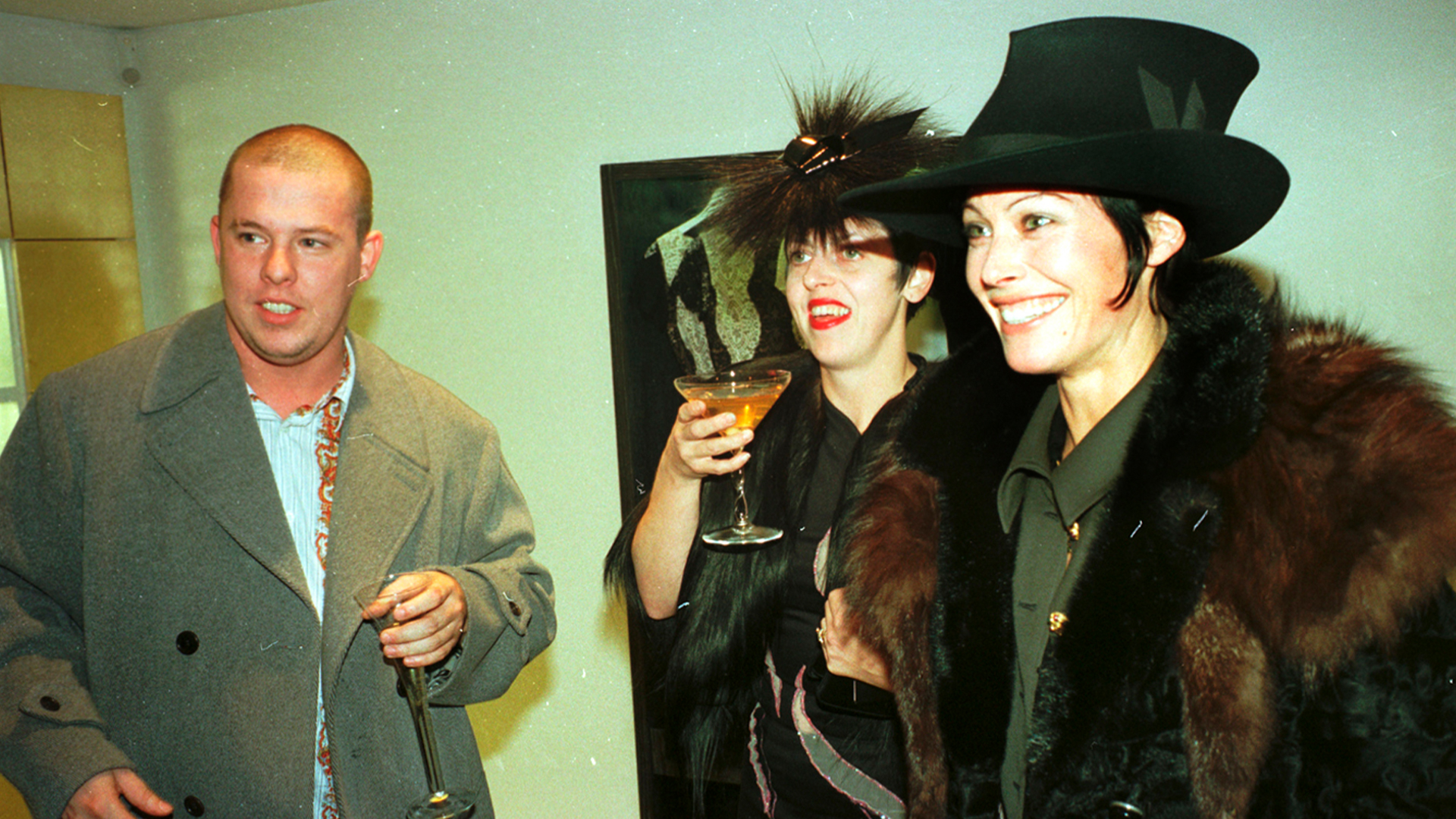This story originally appeared in i-D’s The Timeless Issue, no. 371, Spring 2023. Order your copy here.
If fashion is all about fairy tales – the rags-to-riches transformative power of a ballgown, the sparkle of a fairy godmother’s wand, the lustful desire of lipstick-red apples, the pain and glory of glass slippers – then Amanda Harlech is perhaps one of its most iconic heroines. John Galliano has called her “more than a muse”. Stephen Jones has said: “She is the real deal. She has everything”. Karl Lagerfeld considered her his “outside pair of eyes”. Anna Wintour has described her as “my great friend”.
Amanda Harlech is a bonafide fashion icon, but what does she actually do? She’s not a stylist per se, or a designer, and although she has been referred to as some kind of Homeric ‘muse’, that phrase implies a passivity that understates the autonomy in her decades-long career. Amanda Harlech is technically a ‘creative consultant’. She worked with a young John Galliano in the 80s and 90s, before spending years by the side of Karl Lagerfeld at Chanel. She’s also busy mentoring young Central Saint Martins designers, helping Kim Jones master the ropes of Fendi, and co-curating an exhibition at The Met’s Costume Institute this year.
So what does a creative consultant actually do? In her work she has principally been an interpreter of designers, helping them with research and what we now call “world building”, imbuing each stitch of their designs with narrative. It’s a skill she developed while working with Galliano, where they shared a “belief in stories” which could transform a shirt into something more than simply an item of clothing. “I think it’s as simple as that,” she says.
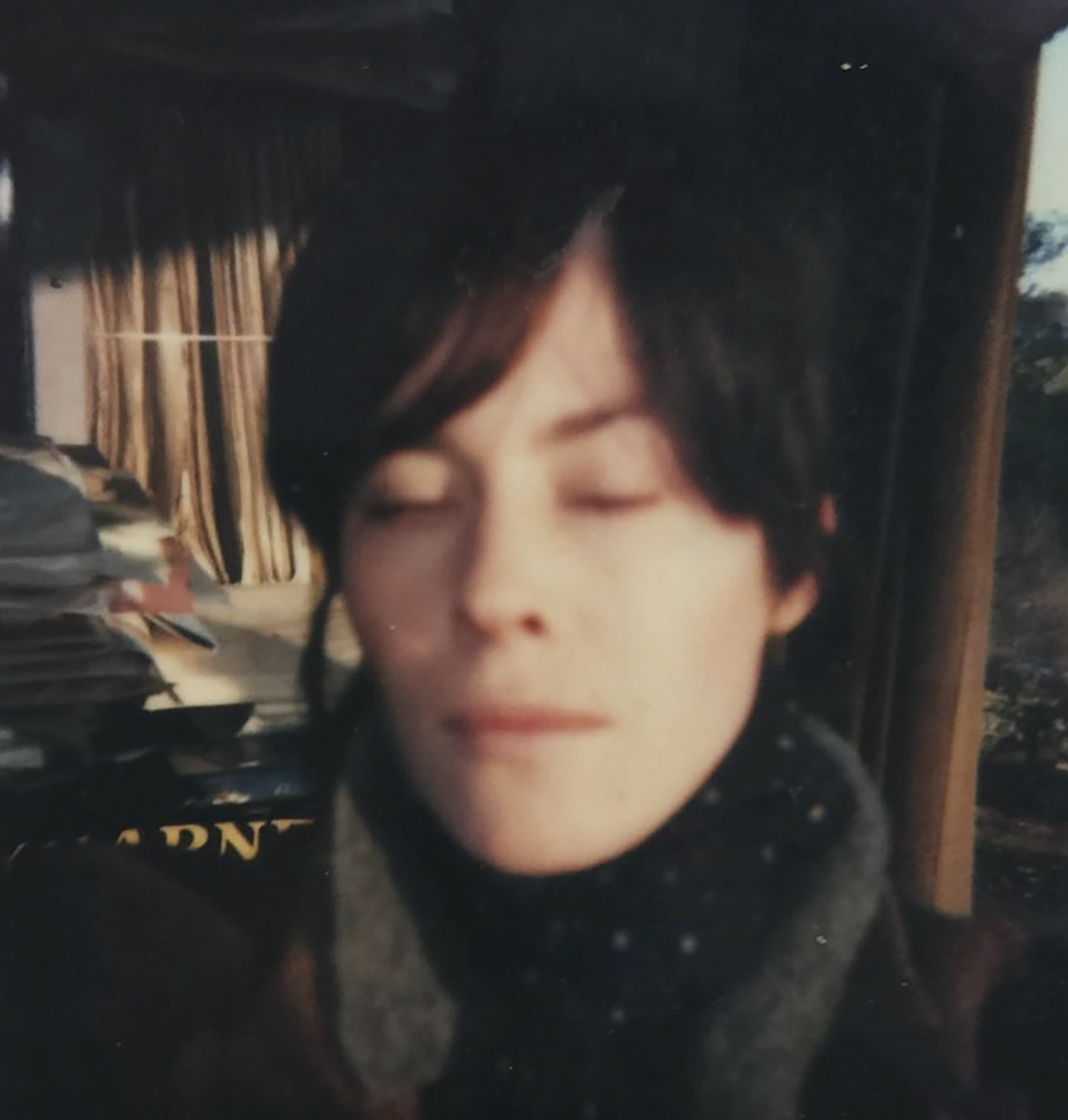
Back when Galliano had little money, a lot of resourcefulness and a huge amount of talent, Amanda was on hand as he magicked up the most romantic clothes and theatrical shows of the decade – from rags and found objects. “Everyone did everything,” Amanda says of the tight-knit team, who would often be hand-sewing found objects onto fabrics, tea-staining dresses by hand, cutting feathers from gelatine-coated chiffon, or making lace by sewing thread onto soluble paper. “I always think of it as the years of faith.”
Like disciples, she and the motley crew of the Galliano studio “all had absolute confidence and belief in John’s vision, which we could bring our own visions to, develop it, and stretch it into all sorts of different corners and heights and depths.” In a marriage of narrative and craft – and with a distinctly British streak of romanticism – the team would produce collections on a shoestring, sometimes skipping seasons because of a lack of money. But such restrictions only pushed their creativity to greater heights. “It was really about making the most beautiful thing, and the most beautiful thing doesn’t have to be gold and glossy.”
“To be an icon sounds spikey and separated, and I really see myself as part of this rabble fashion tribe. It’s like family, isn’t it?” Amanda Harlech
That might be a foreign concept to the highly industrialised way that fashion designers work today, within luxury conglomerates defined by rigorous creative briefs and commercial targets. “A lot of things now look overproduced,” Amanda reflects on contemporary design and imagery. There’s a spirit of punkish DIY and a touch of British Arts and Crafts in the way she approaches couture, more likely to take inspiration from her long walks in nature than marketing briefs. And it’s perhaps why she’s never been pinned down by an official job description.
If Amanda sounds like a fairytale heroine, it is because she is one. Growing up in the heartland of north London Bohemia at the tail-end of the Swinging Sixties, she was encouraged to draw, dress up, play the piano and indulge in the theatrics displayed by her parents’ circle of artists, writers and musicians. She arrived at Oxford to read English Literature (of course) in a Laura Ashley shepherdess dress and graduated with a shaved head wearing a pair of punk zip-up trousers and lightning bolt earrings.
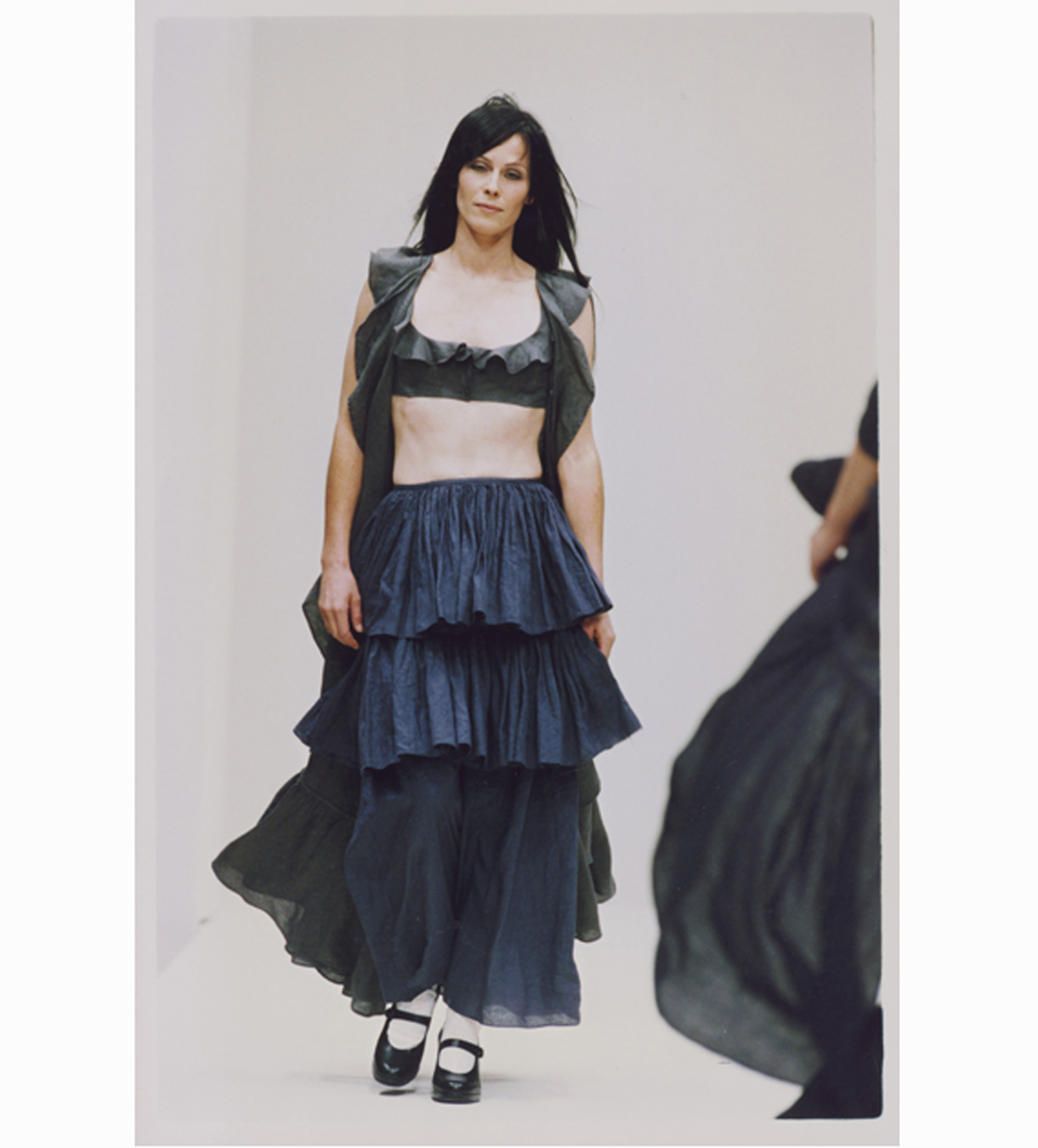
Soon, not-so-plain-old Amanda Grieve – stalking the streets of Soho while looking like a cross between the Artful Dodger and Tess d’Urbervilles – became The Lady Amanda Harlech, wife of Francis Ormsby-Gore, 6th Baron Harlech, whose father (once the British ambassador to Washington) was tragically killed in a car crash during their engagement. An estate in North Wales beckoned but she landed a job at Harper’s Bazaar as a junior fashion editor. There, she met a young designer by the name of John Galliano, the son of a south London plumber whose Saint Martins graduate collection mixed together the exuberant sweep of 18th century revolutionary France and the riotous glamour of the Blitz Kids. Amanda fell so madly in love with his work that she invited him over for tea and a chat. “The conversation didn’t stop for thirteen years,” she says.
The ‘Lady’ title stuck, even if the ring to it didn’t quite match the reality of the sixteen-hour days Amanda spent shuttling her two young children around the Dickensian studios that the Galliano team worked between, occasionally losing them in their Moses baskets beneath layers of bias-cut fabrics. Are you rolling your eyes yet? I would be, too, except, Amanda is anything but lofty, even if she enviably embodies that kind of patrician attitude to wearing couture – with great big boots and chunky jumpers – in that fresh-from-the- stables kind of way. Any kind of scepticism is easily dispelled by her undeniably warm, down-to-earth presence. She resembles the art teacher that every little fashion sapling was encouraged by at school (only with heaps more glamour).
Eventually, in 1997, her relationship with Galliano hit a roadblock. He had been offered the top job at Dior, becoming the first English couturier in Paris since Charles Frederick Worth. “Everything fell apart,” she remembers. Though Galliano implanted his studio team at Dior – as he had done before at Givenchy – a dark cloud was cast over Amanda’s contract, leaving her with more work, more time away from her children and not a penny more from her salary. That same week, she realised her husband had been having an affair for years and she needed to file for a divorce. The downside of being a Lady is that, by law, she was not entitled to any of her husband’s assets.
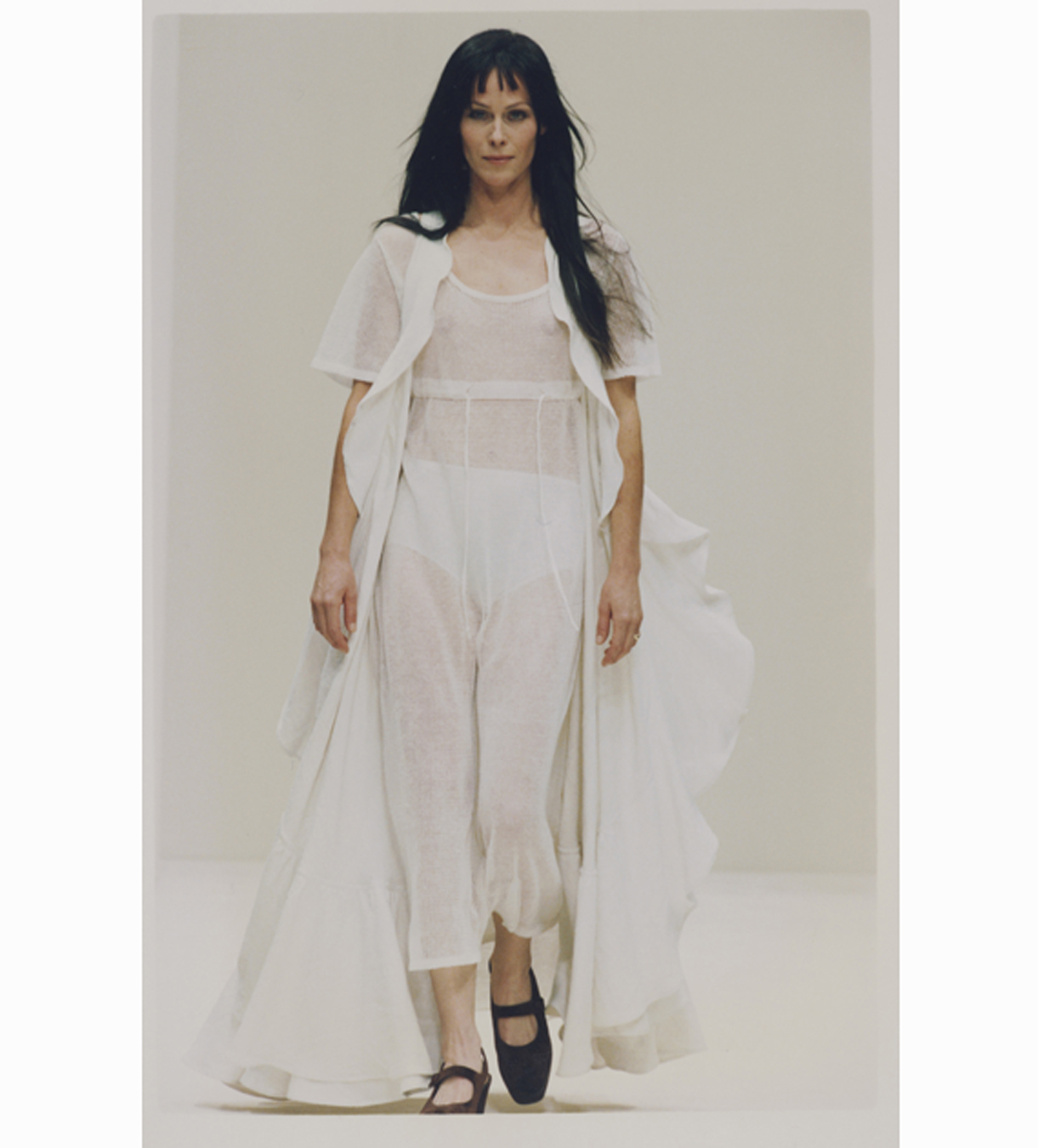
So André Leon Talley facilitated a meeting with Karl Lagerfeld, who heroically stepped in and offered her a contract at Chanel that would change her life. “It was the most terrifying time and Karl was somebody I didn’t know at all. Initially, his thing was ‘I want to help you’. He sent me a contract they could offer me at Chanel and told me to send it to Dior. Then, there was an explosion.”
“Fear and heartbreak,” is what she remembers feeling at the time. Both of her marriages – to her husband and Galliano – were over. “There’s the soldier in you that knows your back is up against the wall and you have to work to be able to provide for your children,” she remembers. And so she signed with Chanel, which she describes as a “thoroughbred racehorse” of a fashion house. Little did she realise it was a world away from the mood boards and punky inventiveness that she had been used to with Galliano. At first, Amanda expected to just do what she did for John, for Karl. “But the power of his design was literally in the millimetres that would alter the whole pitch of a jacket,” she explains. “I realised when I was standing in the middle of the room, putting on a jacket, and twisting it around in a different way, that I was surrounded by a lot of horrified faces,” she laughs. “At Chanel, you’re not meant to touch the clothes!”
But her curiosity and hands-on approach were considered a breath of fresh air by Karl, who perhaps realised he would need some new energy to rival the youth of Galliano and McQueen who were taking over the biggest French couture houses. “I was good at being able to bounce back at him about how a collection was landing or how it connected with what was going on in the world, and I think that he liked that, the fact that what he did meant something emotionally.”
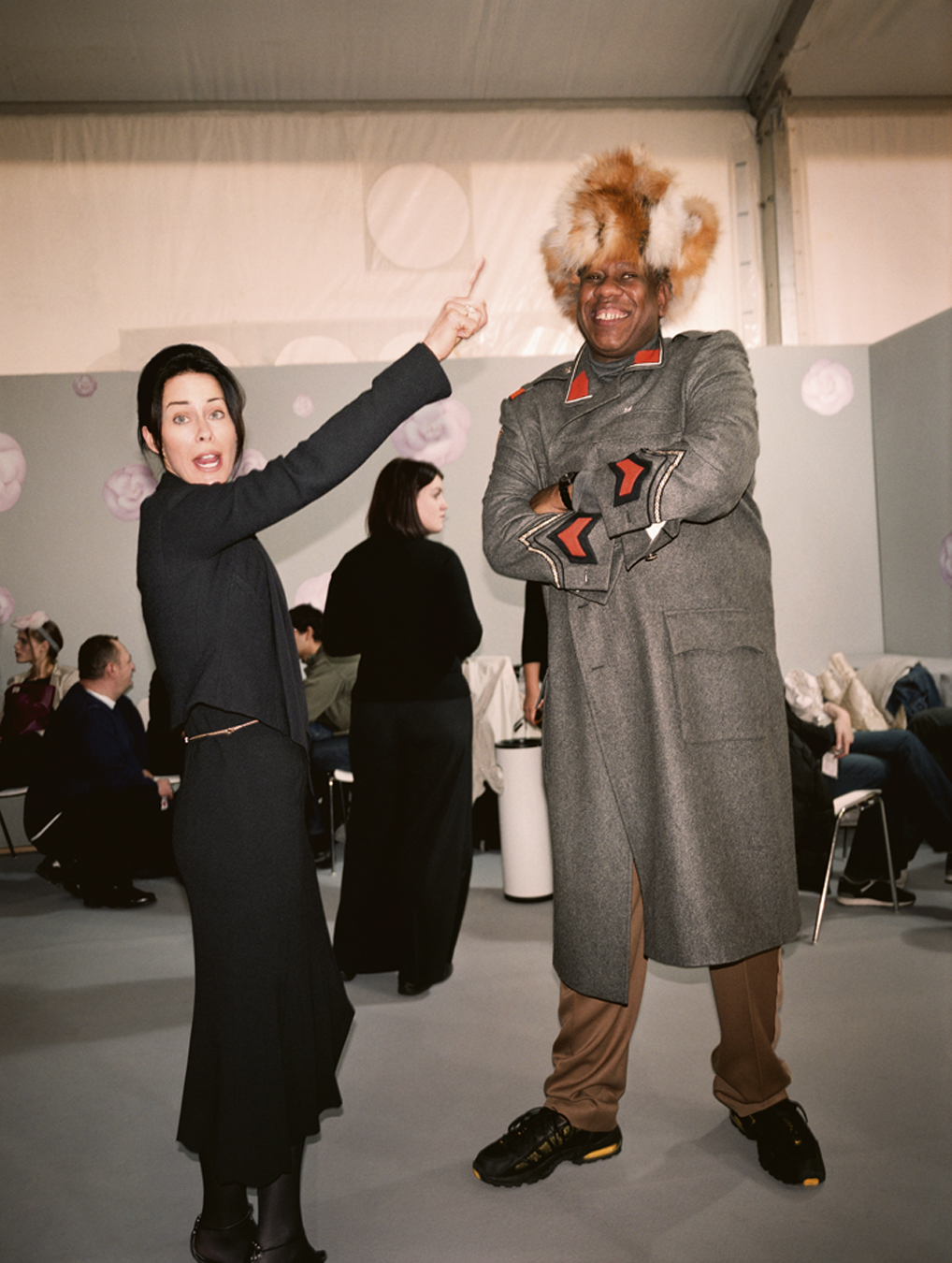
She worked with Karl until his death in 2019, and continues to work with Chanel on its various initiatives, perhaps most excitingly for her, going back to her roots by mentoring designers who are recipients of Chanel’s scholarships at Central Saint Martins, like Brandon Choi. “Experience is the greatest teacher, and you’ve got to learn your craft at every level,” she insists. “Working with the vertices of youth with their incredible courage and insight, I was honoured to be there.”
At Fendi, too, she has been grappling with the new ways of working that are a far cry from the Karl years. Case in point: at the Italian house’s recent show in New York, the studio was divided by Kim working on his collection and Marc Jacobs working on his collaboration capsule. “I sat on the table right in the centre, going back and forth between the two, and I was just blown away,” she says. “There’s this weird old-fashioned thing that you’re not allowed to talk to other designers, which I’ve always fought against. It should not be this secret society; we’re too small a tribe to put up divisions, we should all be celebrating each other’s work like a load of artists in Paris, all having a drink together.”
Part of it, as she points out, is the belief she has in fashion’s “potent mixture of desire, fascination and transformation.” Having spent years working for designers in their ivory towers, you get the sense that Amanda could be the bridge for a more open, collaborative way of working across houses and generations. So, how does she feel about being christened an i-Con herself? “To be an icon sounds sort of spikey and separated, and I really see myself as part of this rabble fashion tribe, which has been so much of my life since 1982,” she answers. “It’s like family, isn’t it? You don’t want to separate yourself from your family.”

